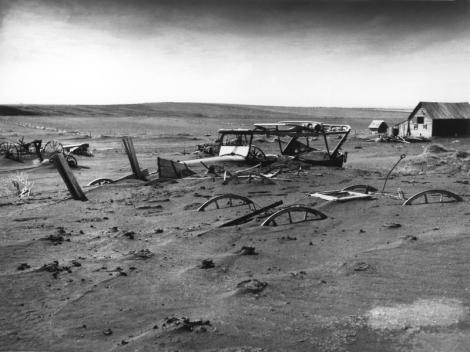As the East Coast licks its wounds from superstorm Sandy, many in New York and New Jersey are still without power, wondering how on Earth it got this bad. Ken Burns, the great innovator of the American documentary, thinks this is the perfect time to seek some wisdom from generations past.
His new film, The Dust Bowl, tells the story of the the worst human-made ecological disaster in U.S. history. For it, Burns and his team tracked down the last remaining survivors of the catastrophic dust storms of the 1930s and matched their intimate stories (most were children at the time) with lush archival footage.
When I caught up with Burns in New York City, he drew comparisons between what happened then and what is happening now — and how we can prevent future Dust Bowls and Sandys.
The Dust Bowl airs Nov. 18 and 19 on PBS.
[A side note: As if interviewing one of my filmmaker heroes at the studios of another intimidatingly cool mega-personality (Stephen Colbert) wasn’t nervewracking enough, running out of AA batteries before the interview was simply mortifying. Way embarrassing. Thank you Colbert Nation for your emergency supplies, and for rescuing what credibility I had left.]
 This story was produced as part of the Climate Desk collaboration.
This story was produced as part of the Climate Desk collaboration.




